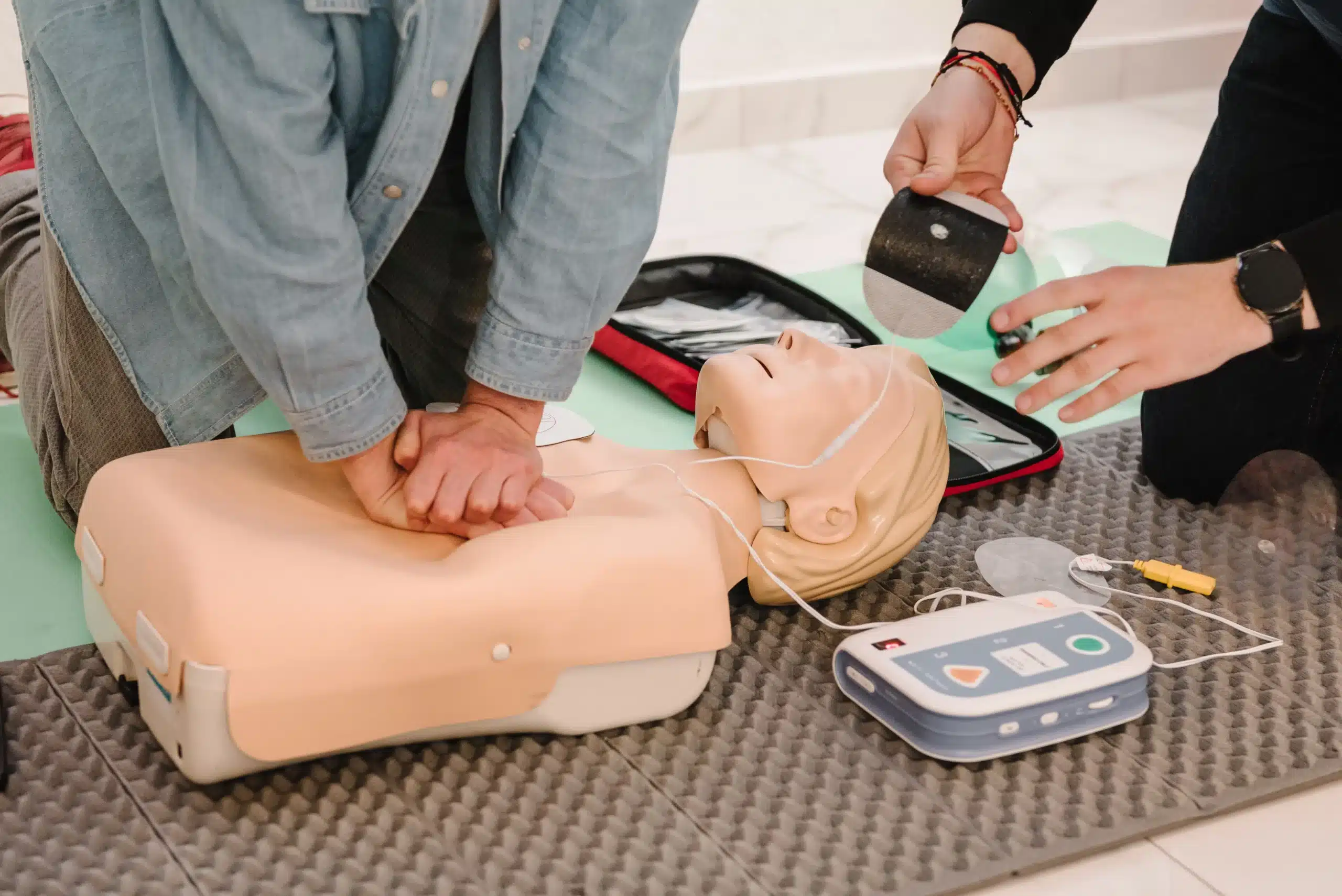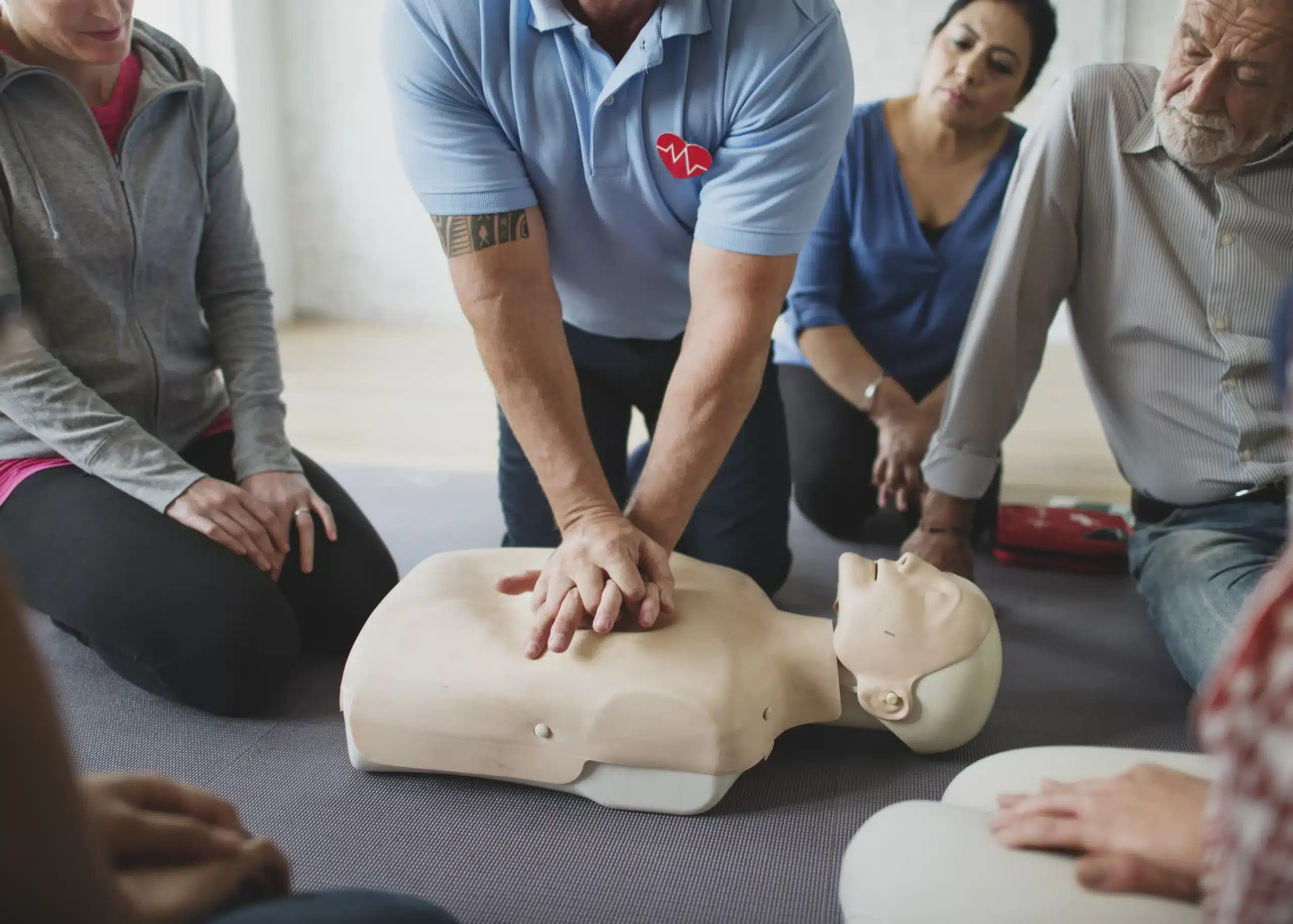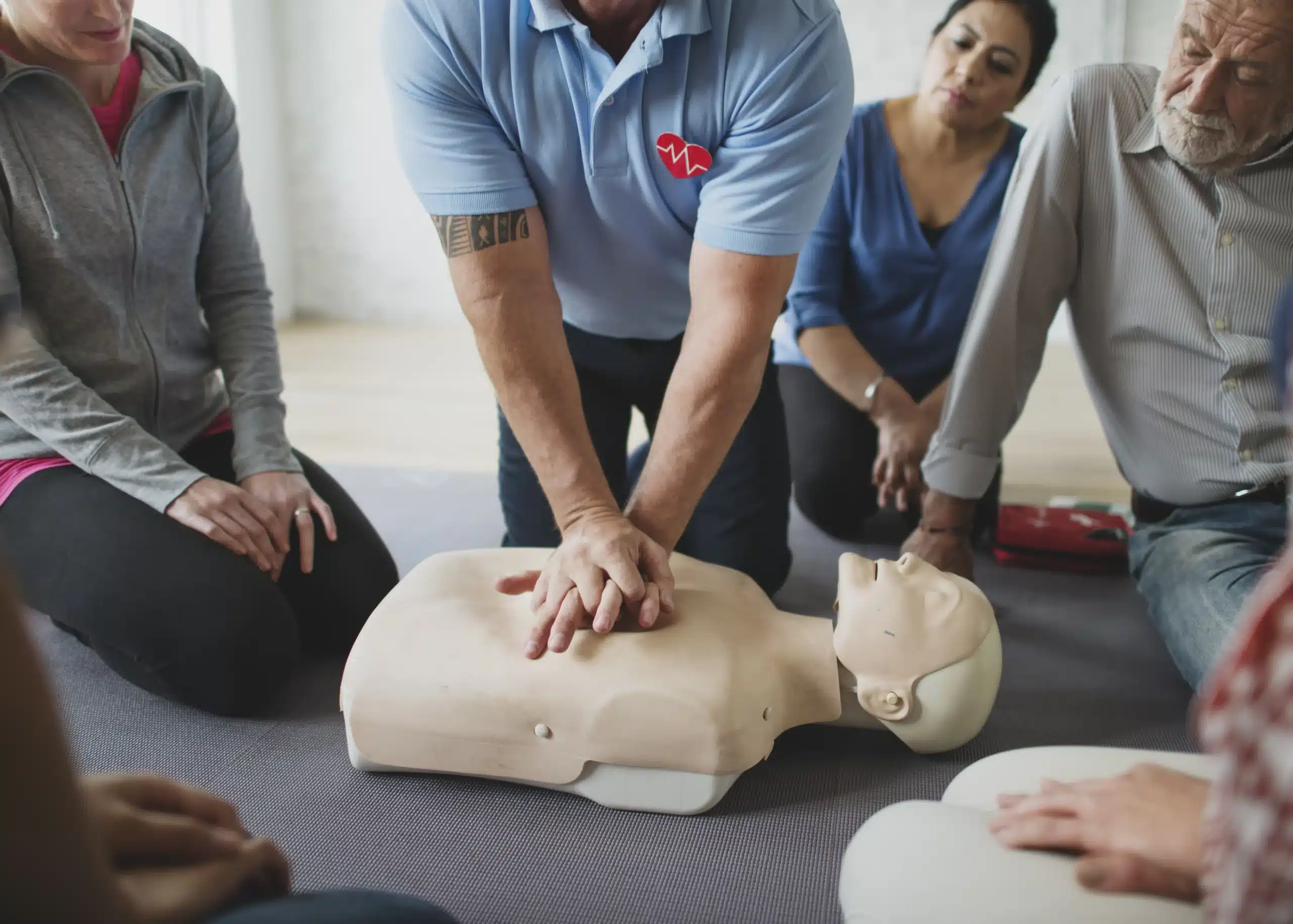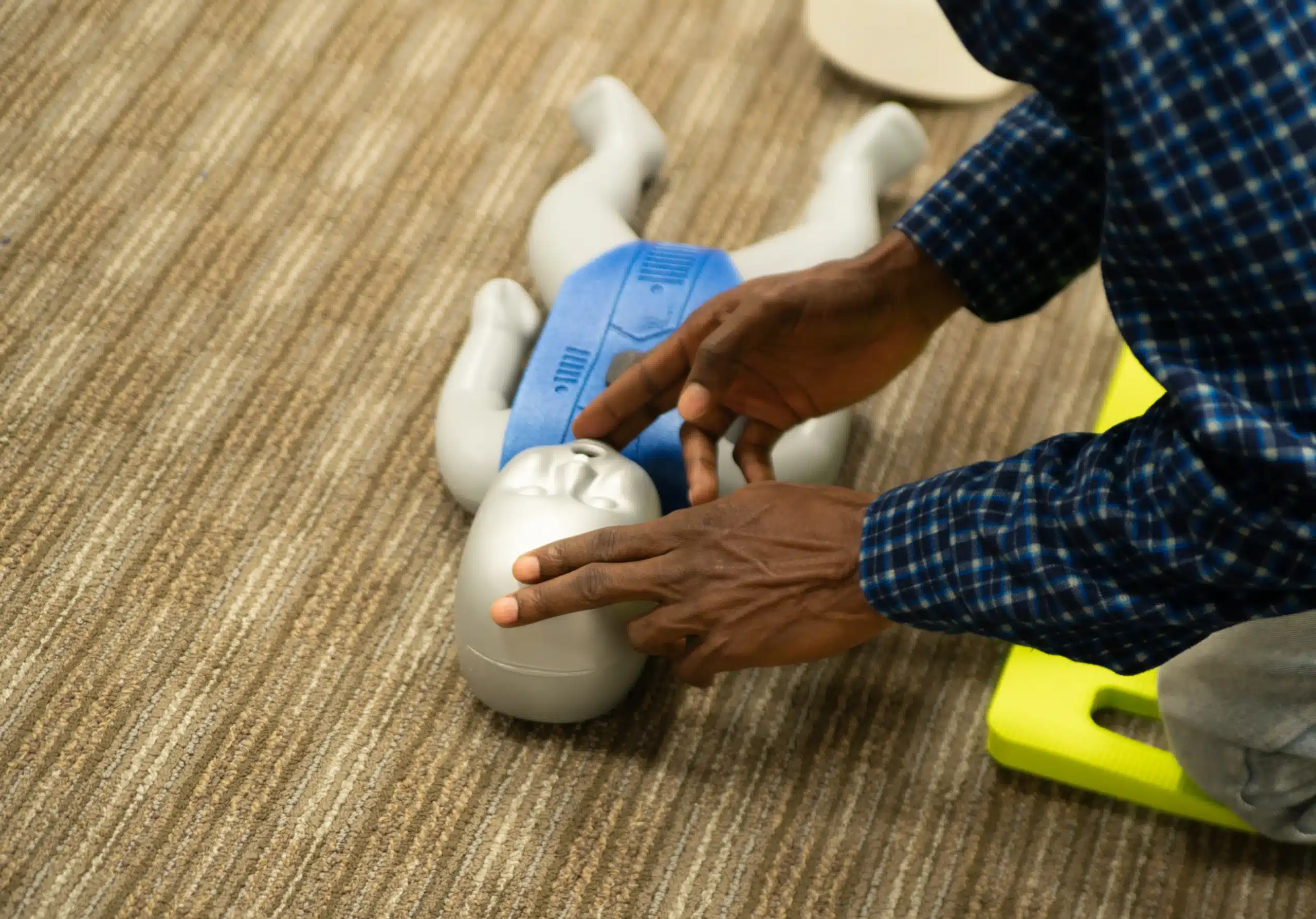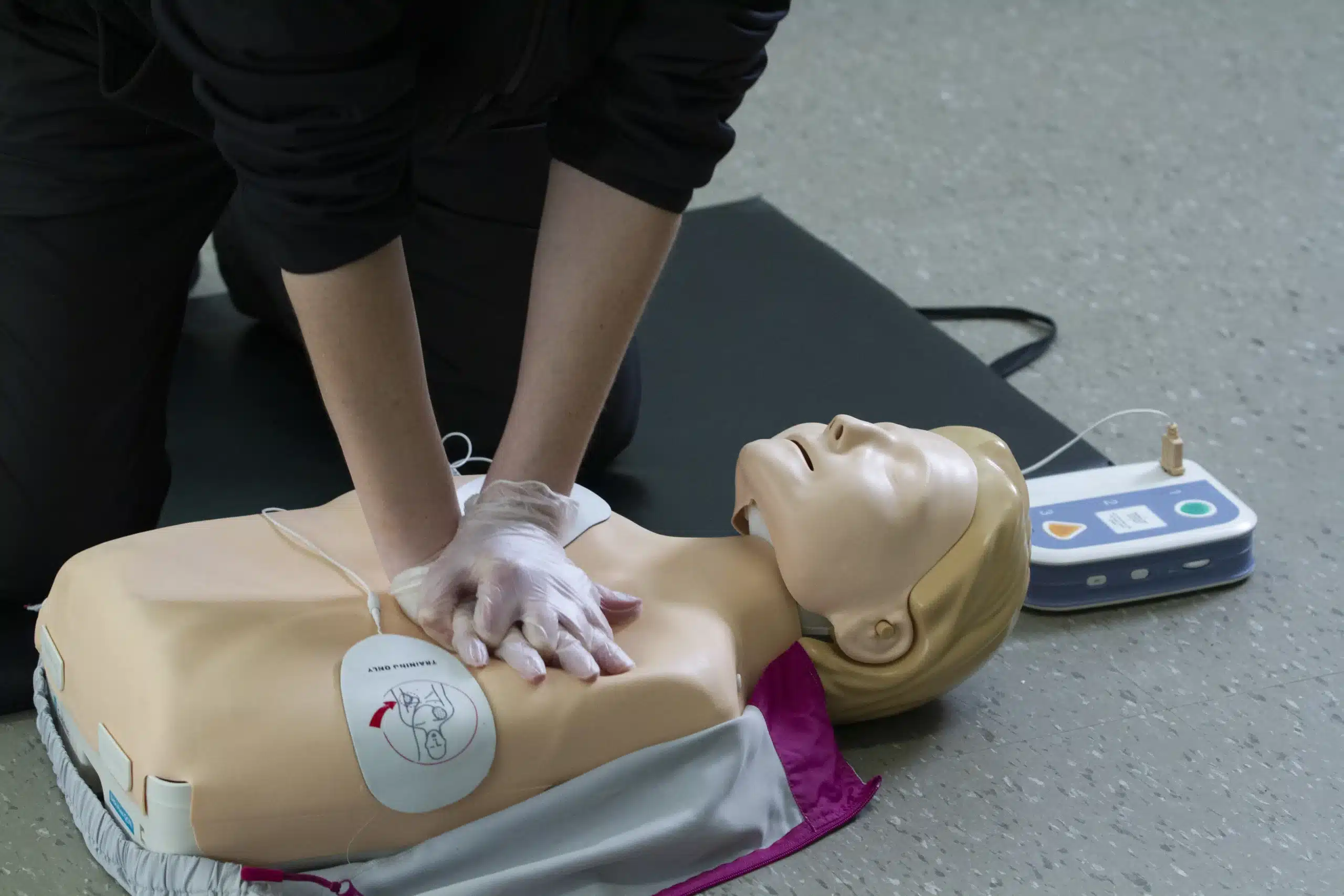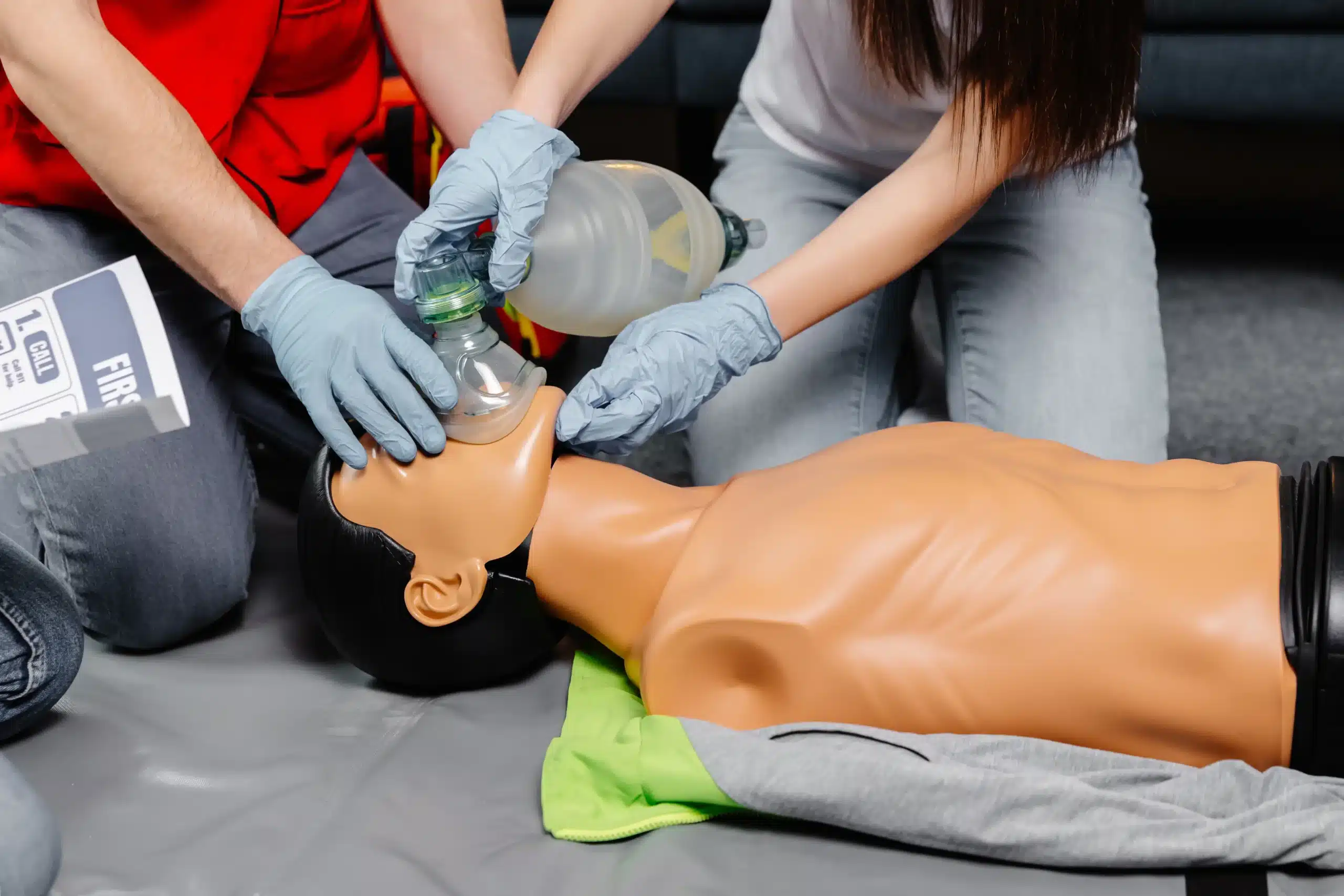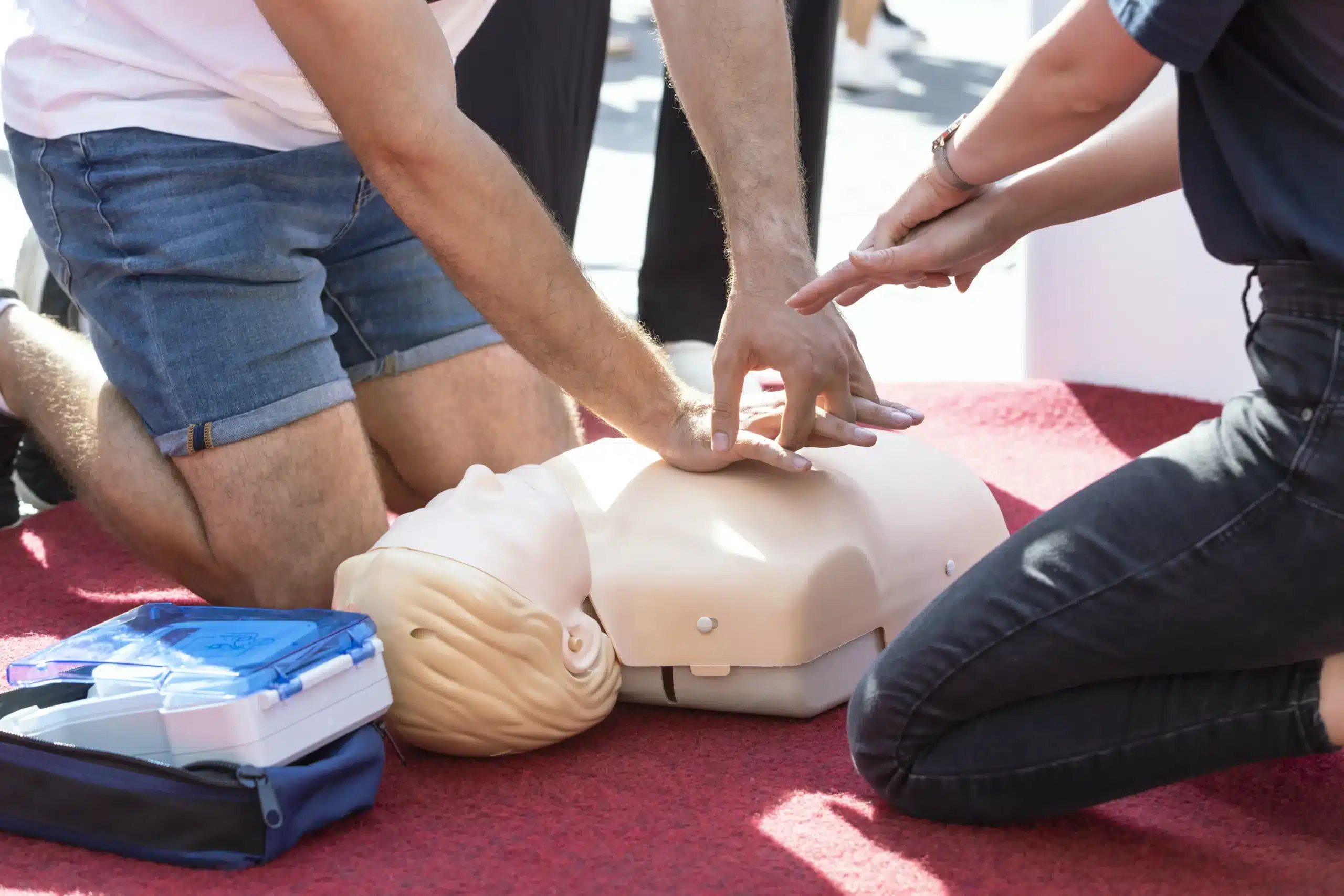Every second counts in a medical emergency, especially when a child is involved. Pediatric First Aid training in Campbell provides the skills and knowledge to act quickly and effectively, potentially making a life-saving difference. This training isn’t just for medical professionals; it’s a valuable asset for anyone who spends time with children, from parents and grandparents to teachers and babysitters. In this comprehensive guide, we’ll explore the world of Pediatric First Aid training, covering everything from the basics to more advanced techniques. We’ll discuss the various types of courses available in Campbell, helping you choose the right one for your needs. We’ll also delve into the importance of this training for different groups, address common concerns, and provide valuable resources for finding training providers in your area. Finally, we’ll equip you with some essential Pediatric First Aid techniques to handle common emergencies with confidence.
Key Takeaways
- Pediatric first aid equips you for emergencies: These skills transform you from a worried bystander into a capable caregiver, ready to provide immediate care in a crisis. This knowledge is invaluable for anyone regularly around children.
- Find the right training: From basic courses to advanced certifications, there’s a pediatric first aid course designed for your specific needs. Consider the course content, instructor qualifications, and certification recognition when selecting a program.
- Pediatric first aid training is invaluable: The confidence and skills you gain are a worthwhile investment, offering peace of mind and the potential to make a real difference in a child’s life.
What is Pediatric First Aid Training?
Pediatric first aid training gives you the skills to respond effectively to medical emergencies involving infants and children. It covers a range of situations, from minor injuries like cuts and scrapes to more serious events like choking, allergic reactions, and breathing difficulties. The goal is to provide immediate care until professional medical help arrives. These courses often include CPR certification for infants and children, adding another layer of lifesaving skills to your toolkit. For a comprehensive program, explore our American Heart Association BLS certification, which covers many of these essential skills.
Essential Skills You’ll Learn
Pediatric first aid training equips you with practical skills to handle emergencies with confidence. You’ll learn to assess a child’s condition quickly, perform CPR, and administer first aid for various injuries and illnesses. The training emphasizes age-appropriate care, recognizing that infants and children have different physiological responses than adults. This specialized knowledge can make a critical difference in an emergency. Beyond the technical skills, the training also builds your confidence, reducing anxiety and promoting a sense of preparedness. Knowing how to react calmly and effectively can significantly impact a child’s outcome during a crisis.
How Pediatric First Aid Differs from Adult First Aid
While some basic first aid principles overlap, pediatric first aid has key differences. Children’s bodies are still developing, making them more susceptible to certain injuries and illnesses. Their airways are smaller, their breathing rates are faster, and their immune systems are less developed. Pediatric first aid training addresses these differences, teaching you how to adapt your responses based on a child’s age and developmental stage. For example, CPR techniques for infants and children vary significantly from adult CPR. Understanding these nuances is crucial for providing safe and effective care. For advanced resuscitation training, consider our RQI classes. We also offer discounted group classes for families, schools, or community organizations.
Why is Pediatric First Aid Training Important?
Knowing what to do in a medical emergency can make all the difference. Pediatric first aid training gives you the skills to respond effectively when a child needs help. This isn’t just about bandaging a scraped knee; it’s about being prepared for anything from a sudden allergic reaction to a life-threatening injury. It’s a critical skill set for anyone regularly caring for children.
Save Lives in Emergencies
In a crisis, seconds count. Pediatric first aid training equips parents, caregivers, and professionals with the ability to quickly assess a situation and provide immediate care. This rapid response can stabilize a child until professional medical help arrives, potentially saving their life. Learning techniques like CPR for infants and children can dramatically increase the chances of survival in breathing and cardiac emergencies. Having these skills readily available can truly be the difference between life and death.
Build Confidence as a Caregiver
Emergencies are stressful. Pediatric first aid training empowers caregivers with the knowledge and confidence to handle difficult situations. Instead of feeling panicked or helpless, you’ll be prepared to take charge and provide appropriate care. This confidence not only helps you in a crisis but also reduces everyday anxiety about the “what ifs” of childcare. Knowing you can handle a medical emergency brings a sense of calm and control to your role as a caregiver. This training can be invaluable for parents and family members.
Meet Legal and Professional Requirements
Many childcare professions require pediatric first aid certification. This ensures that professionals working with children have the necessary skills to respond to medical emergencies. Check with your state or employer for specific requirements. Even if it’s not legally mandated, having this training demonstrates your commitment to children’s safety and well-being, making you a more valuable and responsible caregiver. Contact us at Campbell CPR Classes to learn more about our certification courses.
Types of Pediatric First Aid Courses in Campbell
Choosing the right pediatric first aid course depends on your specific needs and responsibilities. Here’s a breakdown of common course types offered in Campbell:
Basic Pediatric First Aid
Basic pediatric first aid courses cover essential skills for handling common childhood injuries and illnesses. You’ll learn how to respond to cuts, scrapes, burns, fevers, allergic reactions, and other non-life-threatening situations. These courses also typically include basic CPR and choking rescue techniques for infants and children. This training gives parents and caregivers peace of mind knowing they can handle everyday situations. Check with your local provider, like Campbell CPR Classes, to see what’s included in their basic pediatric first aid training.
Advanced Pediatric Life Support (PALS)
Advanced Pediatric Life Support (PALS) certification is designed for healthcare providers who manage critically ill infants and children. This advanced-level training goes beyond basic first aid and CPR, covering topics like respiratory and cardiac emergencies, shock management, and post-resuscitation care. PALS certification requires a higher level of medical knowledge and is typically pursued by doctors, nurses, paramedics, and other healthcare professionals. The American Heart Association offers comprehensive PALS courses.
CPR for Infants and Children
CPR training specifically for infants and children is crucial for anyone regularly caring for young ones. These courses teach how to recognize the signs of cardiac arrest and perform age-appropriate CPR techniques. Knowing how to respond quickly in a medical emergency can make all the difference. Many organizations, including Campbell CPR Classes, offer CPR courses tailored to infants and children. These courses often cover choking relief as well.
Who Needs Pediatric First Aid Training?
Knowing how to respond to a medical emergency involving a child is a valuable skill for anyone, but it’s especially critical for those regularly spending time with children. Pediatric first aid training equips individuals with the knowledge and confidence to act quickly and effectively in such situations. Let’s explore who particularly benefits from this specialized training.
Parents and Family Members
As a parent or close family member, you’re the first line of defense in a child’s medical emergency. Pediatric first aid training gives you the skills to handle common childhood injuries like cuts, burns, and falls. It also teaches you how to recognize and respond to more serious situations such as choking, allergic reactions, and breathing difficulties. This training offers invaluable peace of mind, knowing you can provide immediate care while waiting for professional medical help. For parents of children with specific medical conditions, this knowledge can be even more critical.
Childcare Professionals
For those working in childcare, pediatric first aid training is often a necessity. Whether you’re a daycare provider, babysitter, or camp counselor, you’re entrusted with the safety and well-being of children. Pediatric first aid and CPR training provides practical skills and builds the confidence to act swiftly in critical situations. It covers essential topics like CPR, choking rescue, and managing injuries, ensuring you can provide a safe and secure environment. This specialized knowledge can help childcare professionals maintain licensing requirements and demonstrate their commitment to child safety.
Teachers and School Staff
Teachers and school staff play a vital role in children’s lives and are often the first to witness a medical emergency at school. Pediatric first aid training is essential for these professionals, empowering them to respond effectively to common childhood illnesses and injuries. From playground accidents to sudden allergic reactions, quick action can make a significant difference. Having trained staff on hand can minimize disruptions and ensure a swift response while waiting for professional medical assistance.
Healthcare Workers
While all healthcare workers receive basic first aid training, specialized pediatric first aid training is crucial for those regularly interacting with children. This advanced training delves deeper into the specific medical needs of infants and children, covering topics like recognizing signs of child abuse and administering medication. Regular refresher training ensures healthcare professionals stay up-to-date with the latest guidelines and best practices in pediatric emergency care. This ongoing education allows them to provide the highest quality care to young patients and handle complex medical situations with confidence.
How to Choose the Right Pediatric First Aid Course in Campbell
Picking the right pediatric first aid course is a big decision. You want training that prepares you for anything, but you also need a course that fits your schedule and learning style. Here’s what to consider when choosing a pediatric first aid course in Campbell.
Course Content and Duration
First, think about what you want to learn. Some courses cover the basics, like CPR, choking, and minor injuries. Others go deeper into more complex topics like allergic reactions, seizures, and SIDS. Look for a course that aligns with your specific needs and comfort level. Taking Pediatric First Aid and CPR training is more than just a certification; it’s a commitment to the safety and well-being of the children in your care. Course duration also varies. A shorter course might be enough for a refresher, while a more comprehensive course offers a deeper understanding of pediatric first aid. Consider how much time you can realistically commit to training.
Instructor Qualifications
Your instructor’s experience matters. Choose a course led by certified instructors with a strong background in pediatric first aid. Ideally, they should have real-world experience and be up-to-date on the latest guidelines. Participating in a certified pediatric first aid training course, like those offered by Campbell CPR Classes, will provide you with comprehensive knowledge and hands-on practice, empowering you to respond confidently in emergency situations. Ask about the instructor’s credentials and look for certifications from reputable organizations like the American Heart Association or the American Red Cross. Pediatricians recognize the importance of widespread knowledge in pediatric first aid for anyone caring for a child.
Certification Recognition
Make sure the certification you earn is widely recognized. This is especially important if you need it for work or licensing requirements. A nationally recognized certification holds more weight and demonstrates your commitment to high-quality training. Check with your employer or licensing board to see if they have specific requirements. Campbell CPR Classes offers certifications recognized by the American Heart Association, ensuring your training meets industry standards. You can learn more about our certifications and the Low Price Guarantee on our website.
In-Person vs. Online Options
Think about how you learn best. In-person classes offer hands-on practice and direct interaction with the instructor. This can be invaluable for mastering essential skills like CPR. Online courses offer flexibility and convenience, allowing you to learn at your own pace. Consider your learning style and schedule when deciding which format is right for you. If you prefer in-person training, contact us to learn more about our class schedules and availability in Campbell, San Jose, and Cupertino.
Cost and Value of Pediatric First Aid Training
Knowing the cost and understanding the value of pediatric first aid training are important factors as you consider enrolling in a course. Let’s break down the typical expenses and weigh them against the invaluable benefits.
Average Course Prices
Pediatric first aid training costs vary depending on several factors. These can include the provider, the course format (online, in-person, or blended learning), and the depth of the curriculum. Some courses may include CPR certification, while others might offer it as a separate add-on. For example, a blended learning course like the EMSA Pediatric CPR and First Aid combines online learning with in-person skills sessions. Always check with various providers, including Campbell CPR Classes, for the most up-to-date pricing on combined courses. Looking at similar courses can give you a general idea of current market prices. Remember that prices can differ based on location, so compare options in your area.
Group Discounts and Promotions
If you’re signing up with a group, such as coworkers, a parents’ group, or school staff, inquire about group discounts. Many training centers, including Campbell CPR Classes, offer reduced rates for group bookings. This can make training more affordable and accessible for everyone. Keep an eye out for seasonal promotions or special offers that training centers may run throughout the year. A little research can often lead to significant savings.
Return on Investment
While there’s an upfront cost for pediatric first aid training, consider the long-term value it provides. This training equips you with the skills to respond confidently and effectively in emergencies involving children. Think of it as an investment in peace of mind, knowing you can act quickly and appropriately if a child in your care experiences a medical crisis. The ability to provide immediate care can significantly impact the outcome of an emergency. Beyond the potential to save a life, the confidence and skills you gain are invaluable. Check out Campbell CPR Classes’ Low Price Guarantee to see how they prioritize value and affordability. For parents, caregivers, and anyone working with children, the return on investment for this training is immeasurable.
How to Register for Pediatric First Aid Training in Campbell
Once you’ve decided to take pediatric first aid training, actually signing up is easier than you might think. Here’s how to register, whether you prefer to do it online or in person:
Register Online
Many organizations offer the convenience of online registration. For example, you can register online for the American Heart Association’s Heartsaver® Pediatric First Aid CPR AED Training, designed for anyone involved in childcare. This course covers how to manage illnesses and injuries in children and infants until professional help arrives. Local providers like Campbell CPR Classes also typically offer online registration. Check their website for schedules and availability.
Sign Up In-Person
If you prefer a more personal touch or have questions, you can sign up in person. Training centers often allow on-site registration for their daily classes. Campbell CPR Classes offers a range of courses, including pediatric first aid, right here in Campbell. This allows you to connect with the instructors and see the learning environment.
Required Documents and Prerequisites
Before you register, double-check for any required documents or prerequisites. Generally, participants should be at least 16 years old. Some courses may require prior completion of basic CPR training. For instance, the American Red Cross Pediatric First Aid CPR AED certification often meets California’s EMSA requirements for childcare teachers, which may have specific documentation needs. Check with your chosen provider or see In Home CPR’s resources for information on local requirements.
Pediatric First Aid Training Providers in Campbell
Finding the right pediatric first aid training program is crucial for equipping yourself with the skills to handle emergencies involving children. Here are some reputable providers in and around Campbell:
Campbell CPR Classes
Campbell CPR Classes offers a range of American Heart Association certification courses, including pediatric first aid, BLS, ACLS, and PALS. They emphasize hands-on training in a supportive environment and are committed to the lowest prices in Santa Clara County, backed by their Low Price Guarantee. Conveniently located in Campbell, they serve San Jose, Campbell, and Cupertino. Group discounts are available. For any questions, feel free to contact them.
American Red Cross
The American Red Cross provides pediatric first aid and CPR training for parents, caregivers, and childcare providers. Their courses cover essential skills for responding to emergencies involving infants and children. They offer various learning options, including online and in-person classes.
American Heart Association
The American Heart Association (AHA) offers comprehensive training in pediatric life support, including PALS and BLS courses. These programs use evidence-based practices and hands-on training to prepare individuals for pediatric emergencies. The AHA also provides resources and continuing education for healthcare professionals.
St. John Ambulance
St. John Ambulance offers a variety of first aid training courses, including pediatric first aid. These programs aim to give individuals the knowledge and confidence to handle medical emergencies involving children. St. John Ambulance courses are internationally recognized.
Common Concerns About Pediatric First Aid Training
It’s natural to have questions about pediatric first aid training. Let’s address some common concerns:
Is Online Training Effective?
Yes, online pediatric first aid training can be an effective way to learn essential lifesaving skills. A good online pediatric first aid course covers the same material as in-person training, often using videos and interactive simulations. While online courses offer flexibility, they may not provide the same level of hands-on practice as in-person classes. Consider supplementing your online training with in-person practice if you’d like more hands-on experience.
Is it Age-Appropriate?
Pediatric first aid courses are designed to be age-appropriate. Whether you’re a parent, caregiver, or professional, the course content will be tailored to your needs and the children you care for. Pediatric first aid training gives caregivers the knowledge and skills to respond effectively to emergencies involving infants, children, and adolescents.
How Complex Are the Skills?
Pediatric first aid involves learning specific techniques, but the skills are presented clearly and manageably. Quality training programs focus on building confidence so you can respond calmly and effectively in an emergency. Even basic pediatric first aid knowledge can make a significant difference.
Recertification Requirements
Most pediatric first aid certifications are valid for two years. Refresher training is typically required to stay current with the latest guidelines and maintain your certification. Regular recertification ensures you’re always prepared to provide the best possible care. Check with your training provider for specific recertification requirements.
Master Essential Pediatric First Aid Techniques
This section covers some essential pediatric first aid techniques. Keep in mind that this information is for educational purposes only, and hands-on training from a certified instructor is critical. Campbell CPR Classes offers comprehensive pediatric first aid courses that cover these techniques in detail.
CPR for Infants and Children
CPR for infants and children differs from adult CPR. You’ll use gentler techniques and different compression depths with children. For infants (under one year old), use two fingers for compressions, about 1.5 inches deep. For children (one year to puberty), use one or two hands, compressing the chest about 2 inches deep. The American Heart Association recommends 30 chest compressions followed by two rescue breaths for single-rescuer infant and child CPR. This 30:2 compression-to-breath ratio is crucial for effective CPR. Early intervention is key, as brain damage can occur within minutes of oxygen deprivation. For more information on child CPR, visit Mount Sinai.
Choking Relief Techniques
Choking is a common emergency in children. Knowing how to perform back blows and chest thrusts (for infants) or abdominal thrusts (for children) can dislodge an obstruction and restore breathing. For infants, support their head and neck while delivering five back blows followed by five chest thrusts. For children, stand behind them and perform abdominal thrusts until the object is dislodged or they become unconscious. Quick action is vital, so understanding these techniques is essential for anyone caring for children.
Treat Burns and Scalds
Burns and scalds are frequent childhood injuries. Knowing how to assess the burn’s severity and provide appropriate first aid is crucial. Immediately cool the burn with cool (not cold) running water for 10–20 minutes. Don’t use ice, butter, or ointments. Cover the burn with a sterile, non-adhesive dressing. For severe burns, seek immediate medical attention.
Recognize and Respond to Allergic Reactions
Allergic reactions in children can range from mild to life-threatening. Learn to recognize the signs of an allergic reaction, such as hives, swelling, difficulty breathing, and changes in behavior. If a child has a known allergy and experiences a severe reaction (anaphylaxis), administer their prescribed epinephrine auto-injector (like an EpiPen) if available, and call 911 immediately. Even if the symptoms seem to improve after using the epinephrine, seek immediate medical attention.
Related Articles
- Pediatric CPR & First Aid Classes in San Jose – Campbell CPR Classes
- Find First-Aid Classes Near Me: A Practical Guide – Campbell CPR Classes
- Online PALS Classes in Cupertino: Your Guide – Campbell CPR Classes
- CPR Classes in Cupertino: Your Ultimate Guide – Campbell CPR Classes
- Pediatric Advanced Life Support (PALS) in Cupertino – Campbell CPR Classes
Frequently Asked Questions
How can I tell if a child is choking?
A choking child may suddenly grasp their throat, be unable to speak or cry, make high-pitched noises while inhaling, or turn blue around the lips and face. If they’re coughing forcefully, encourage them to continue coughing, as this can help dislodge the object. If the cough becomes weak or ineffective, act quickly and perform age-appropriate choking rescue techniques.
What’s the difference between pediatric and adult first aid?
Children’s bodies react differently to injuries and illnesses than adults do. Pediatric first aid focuses on these differences, teaching you age-appropriate responses. For example, CPR techniques and choking rescue methods vary significantly between adults, children, and infants. Pediatric first aid also covers common childhood illnesses and injuries.
What if I’m unsure about providing first aid to a child?
It’s always best to seek professional medical help if you’re uncertain about a child’s condition. Even basic first aid knowledge can be helpful while waiting for paramedics to arrive. Remember, any action you take should be guided by the principle of “do no harm.” If you’re hesitant, call 911 and follow the dispatcher’s instructions.
Where can I find reliable pediatric first aid training near me?
Several organizations offer pediatric first aid training, including the American Red Cross, the American Heart Association, and local training centers like Campbell CPR Classes. Look for courses taught by certified instructors and offering nationally recognized certifications. Check online or contact your local community center for recommendations.
How often do I need to renew my pediatric first aid certification?
Most pediatric first aid certifications are valid for two years. Recertification ensures your skills and knowledge are up-to-date. Check with your certifying organization for specific renewal requirements. Regular refresher courses can help you maintain confidence and competence in providing pediatric first aid.


